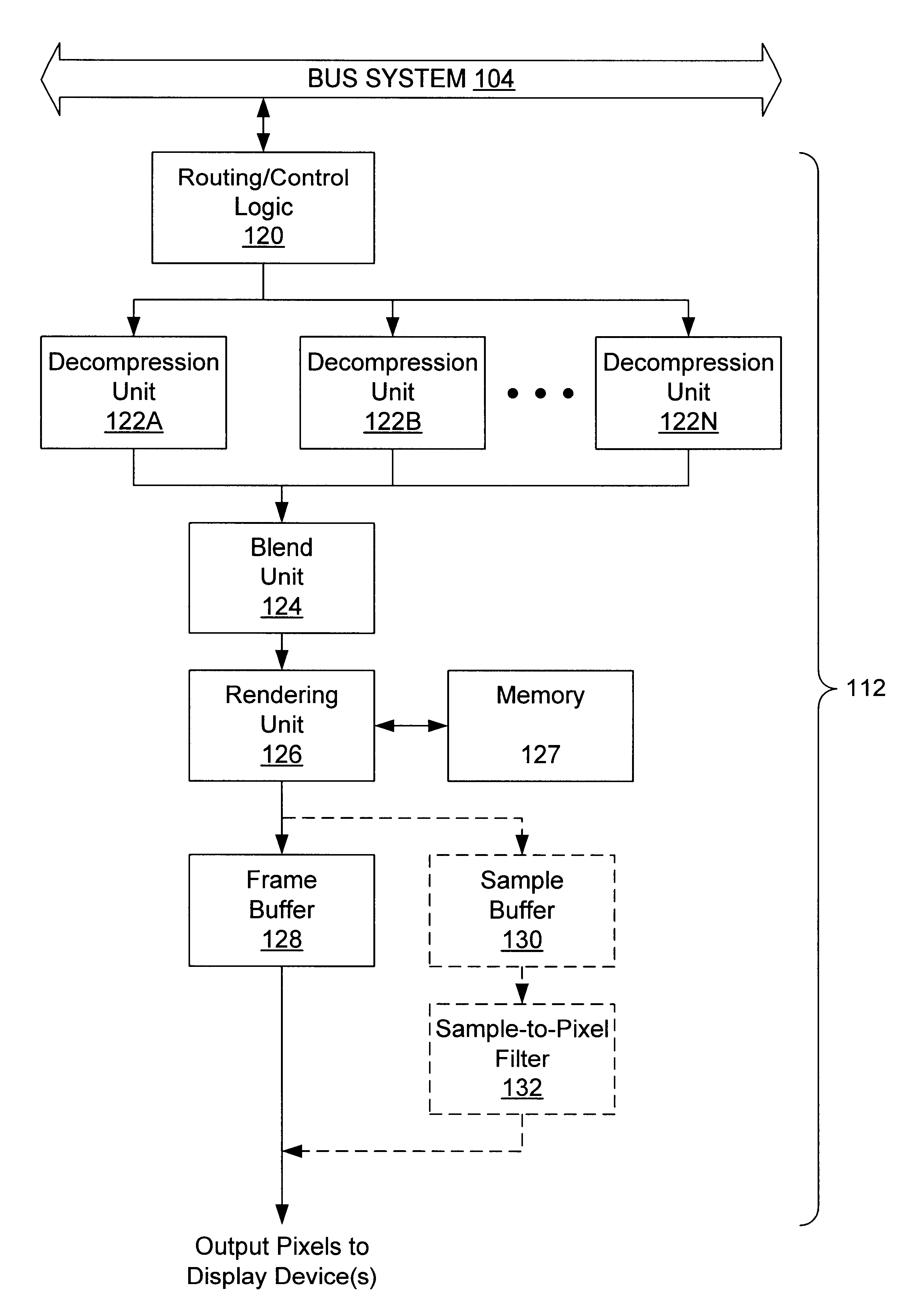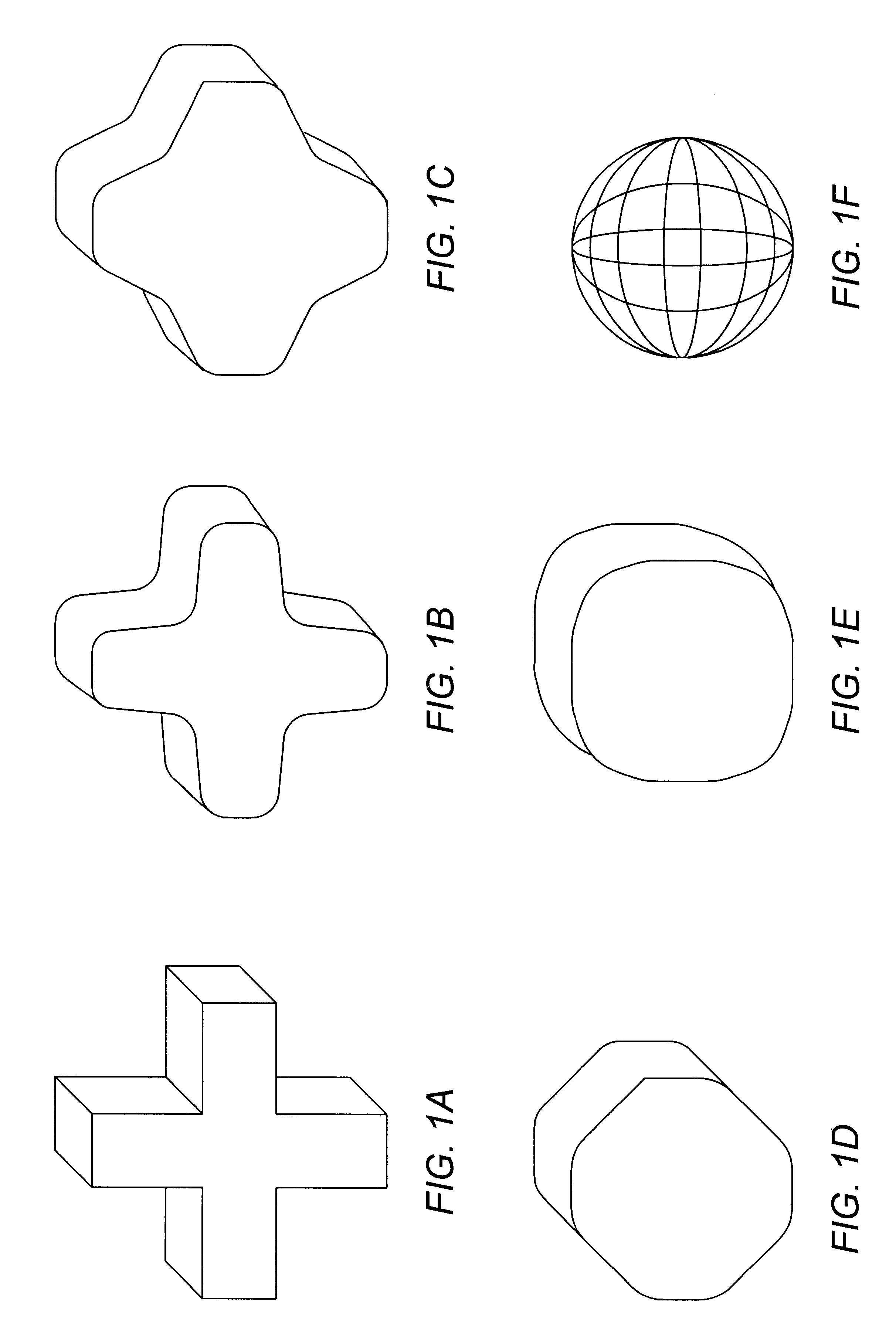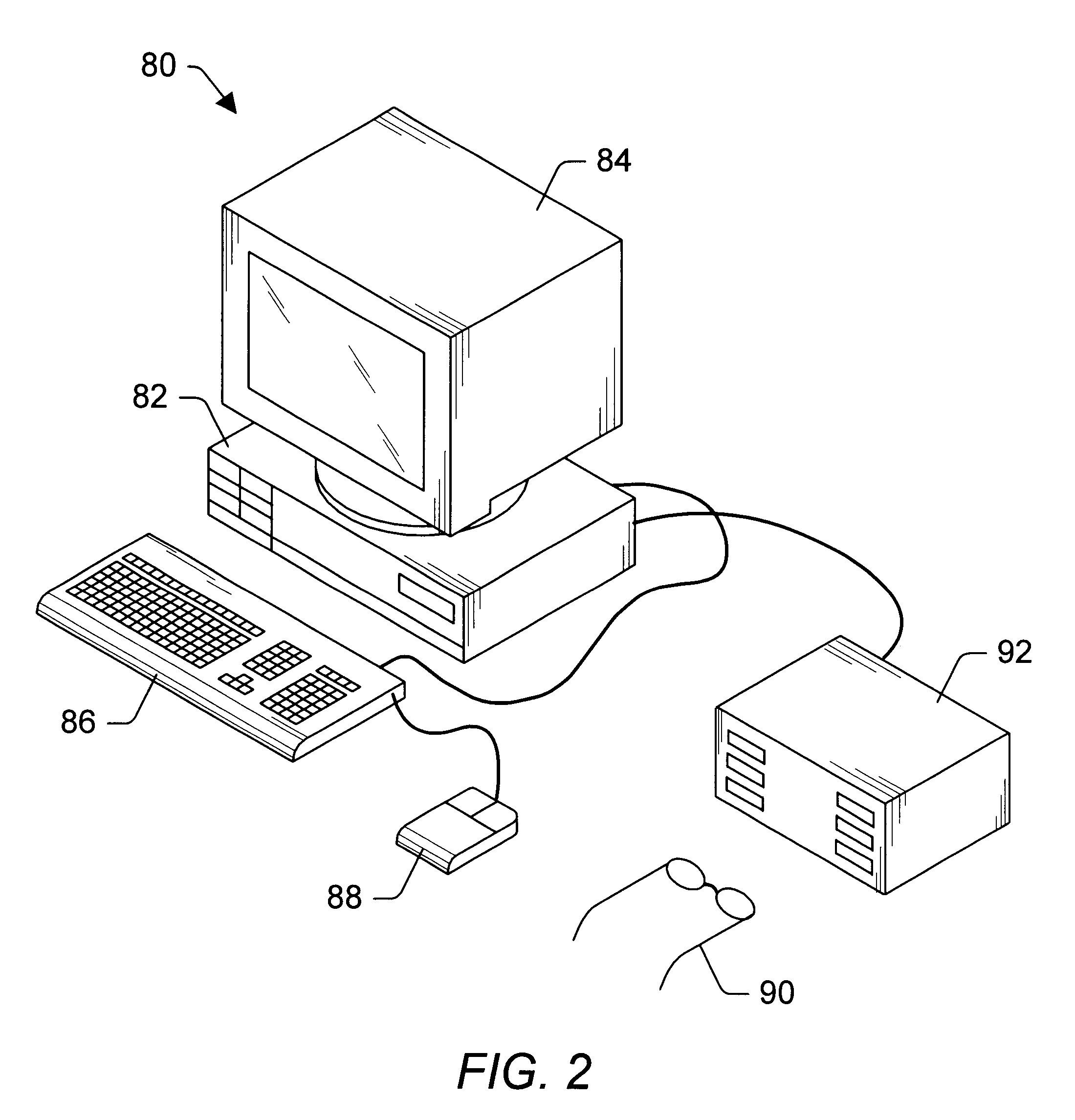Morphing decompression in a graphics system
a graphics system and morphing technology, applied in the field of computer graphics, can solve the problems of increasing the complexity of the image displayed, the complexity of the image, and the increase in the amount of data being sent to the display device,
- Summary
- Abstract
- Description
- Claims
- Application Information
AI Technical Summary
Problems solved by technology
Method used
Image
Examples
Embodiment Construction
FIG. 2--Computer System
Referring now to FIG. 2, one embodiment of a computer system 80 that includes a three-dimensional (3D) graphics system is shown. Computer system 80 comprises a system unit 82 and a display device 84 coupled to the system unit 82. Display device 84 may be any of various types of display monitors or devices, e.g., a CRT, LCD, DLP, gas-plasma, projection or other type of display. Various input devices may be connected to the computer system, including a keyboard 86 and / or a mouse 88, or other input device (e.g., a trackball, digitizer, tablet, six-degree of freedom input device, head tracker, eye tracker, data glove, body sensors, etc.). Application software may be executed by the computer system 80 to display 3D graphical objects on display device 84. As described further below, the 3D graphics system in computer system 80 includes a super-sampled sample buffer with a programmable real-time sample-to-pixel calculation unit to improve the quality and realism of i...
PUM
 Login to View More
Login to View More Abstract
Description
Claims
Application Information
 Login to View More
Login to View More - R&D
- Intellectual Property
- Life Sciences
- Materials
- Tech Scout
- Unparalleled Data Quality
- Higher Quality Content
- 60% Fewer Hallucinations
Browse by: Latest US Patents, China's latest patents, Technical Efficacy Thesaurus, Application Domain, Technology Topic, Popular Technical Reports.
© 2025 PatSnap. All rights reserved.Legal|Privacy policy|Modern Slavery Act Transparency Statement|Sitemap|About US| Contact US: help@patsnap.com



